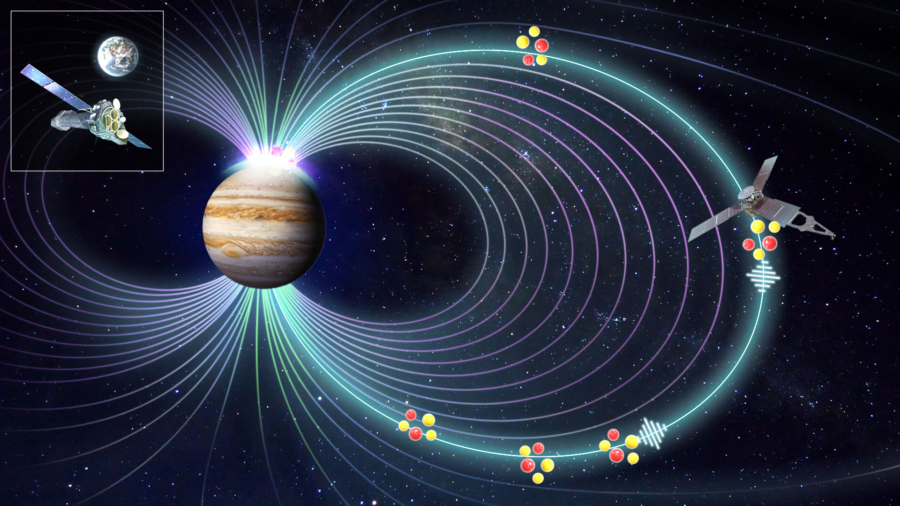The aurora borealis, or northern lights, are Earth’s greatest light show, dazzling those lucky enough to see them in the northernmost reaches of our planet.
It’s a phenomenon shared by other planets in our solar system, including the largest, Jupiter, which is bathed in spectacular color at its poles.
Characterized by massive pulsating X-ray flares, Jupiter’s northern lights were first discovered 40 years ago. Astronomers have long sought to explain the mechanism behind these auroras. NASA has called them “a powerful mystery.”
“They are unimaginably more powerful (than Earth’s) and much more complex. Jupiter’s northern lights have these bright flares, and these flares can be up to terawatts of power that would power all of civilization,” said William Dunn, a research fellow at University College London’s Mullard Space Science Laboratory.
He was part of an international team of scientists who say they have solved this 40-year-old mystery.
By combining observations and data from NASA’s Juno spacecraft, which launched in 2016, and the European Space Agency’s X-ray telescope, the researchers found that the pulsating X-ray auroras are caused by fluctuations of Jupiter’s magnetic field.
“Probably the reason it remained a mystery for 40 years is that we hadn’t had this opportunity. We’ve not had this beautiful and amazing spacecraft in Juno and also an X-ray telescope orbiting the Earth,” Dunn said.
The research published in the journal Science Advances on Friday.
Waves of Particles
On Earth, the northern lights are driven primarily by solar winds—particles emitted during solar storms that flow out through space and tear through Earth’s magnetosphere, creating a colorful light show.
On Jupiter, there are other factors at play, Dunn said.
Jupiter spins much faster than Earth, and it has the strongest magnetic field of any planet in our solar system. What’s more, Jupiter’s third-largest moon, Io, is covered by more than 400 active volcanoes, which pump out volcanic material into Jupiter’s magnetosphere, the area controlled by a planet’s magnetic field.
“The northern lights are basically the video of what’s going on in the magnetosphere,” Dunn said.
Jupiter’s X-ray flares were first discovered in 1979, Dunn added, which puzzled scientists because the phenomena were usually associated with more exotic space bodies like black holes and neutron stars.
With the simultaneous observations from Juno and the MM-Newton X-ray telescope, Dunn and his colleagues were able to link the X-ray pulses, which happen at regular intervals, with Jupiter’s breathtaking auroras.
“Every 27 minutes Jupiter produces a burst of X-rays. That gave us the fingerprints. We knew that Jupiter was doing this every 27 minutes, and then we could look at the Juno data to see what processes are also happening every 27 minutes.”
What they found was, as Jupiter rotates, it drags around its magnetic field, which is struck directly by particles of solar wind and compressed. These compressions heat particles—electrically charged atoms called ions—that are trapped in Jupiter’s magnetic field. This triggers a phenomenon called electromagnetic ion cyclotron (EMIC) waves, the researchers said.
Guided by Jupiter’s magnetic field, the ions surf the EMIC wave and eventually slam into the planet’s poles, triggering the X-ray aurora.
Dunn said the next step for the research team would be to see whether this process is unique to Jupiter or if it happens on other planets—including ones outside our solar system.
By Katie Hunt

